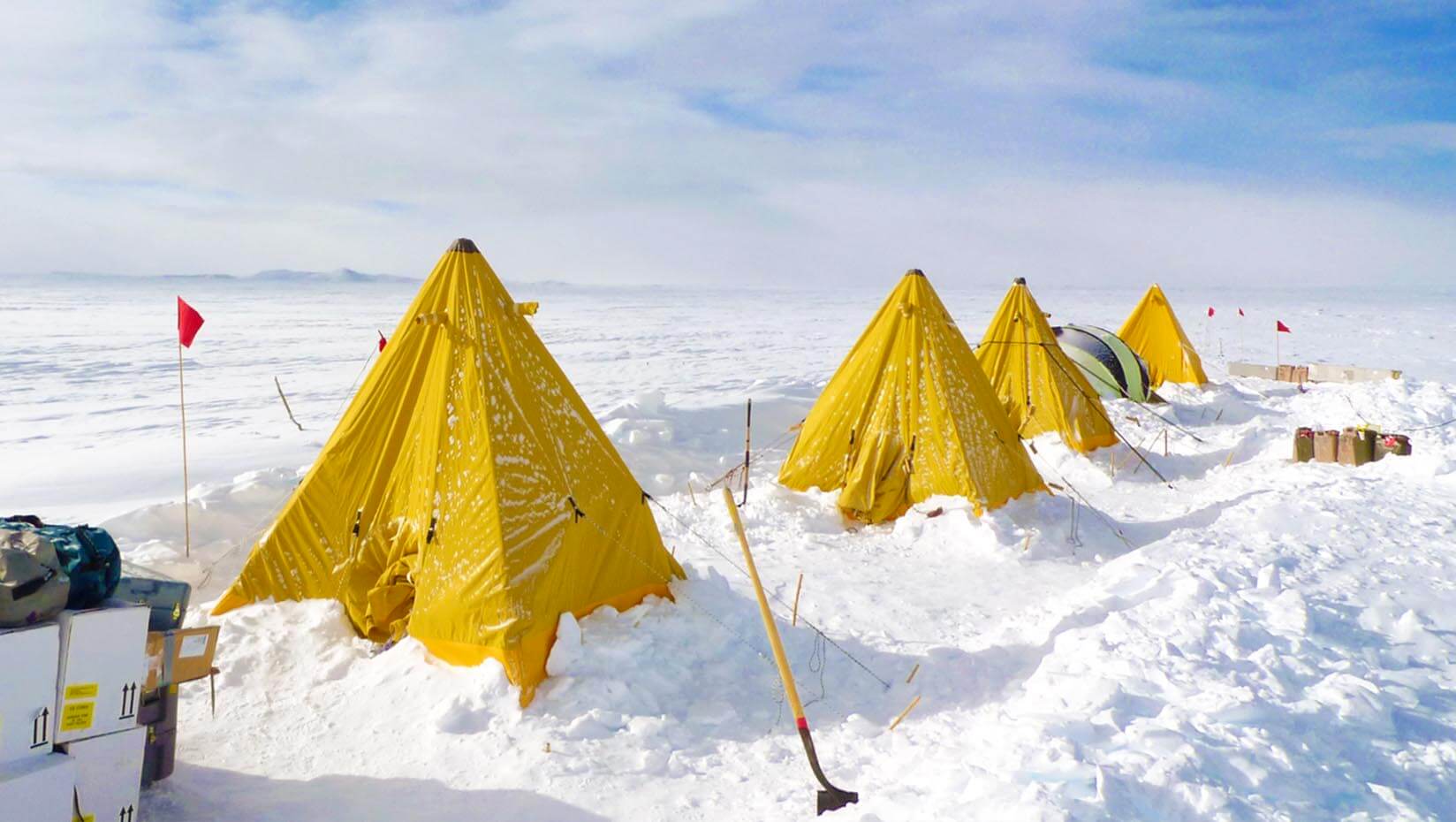CCI researchers among internationally recognized scientists leading new $25M Center for Oldest Ice Exploration – P. Mayewski, A. Kurbatov

University of Maine Climate Change Institute researchers will return to the Allan Hills blue ice area in Antarctica as part of a new Center for Oldest Ice Exploration, or COLDEX, led by Oregon State University and made possible by a five-year, $25 million National Science Foundation grant.
COLDEX is one of six new NSF science and technology centers “to advance ambitious, complex research in fields ranging from mechanobiology to particle physics to climate change.” The NSF Center for Oldest Ice Exploration, led by Oregon State paleoclimatologist Ed Brook, aims to transform the current understanding of Earth’s climate system by discovering and recovering some of the oldest ice on Earth.
The multidisciplinary team will drive this new science and discovery while building climate literacy and action in classrooms and communities across the United States, according to the NSF news release. The center’s researchers are from Oregon State University; American Meteorological Society; Dartmouth College; University of California, Berkeley; University of California, Irvine; University of California San Diego; the University of Kansas; the University of Maine; The University of Texas at Austin; the University of Washington; University of Minnesota Duluth; University of Minnesota Twin Cities; Princeton University; Amherst College; and Brown University.
Internationally recognized UMaine climate scientists Paul Mayewski, who directs the Climate Change Institute, and Andrei Kurbatov, an associate professor in the Climate Change Institute and School of Earth and Climate Sciences, and several graduate students will participate in COLDEX project using the state-of-the-art UMaine Keck laser ablation system.
“The Climate Change Institute has a long history of Antarctic research, including some of the earliest expeditions to Antarctica’s blue ice areas where the new approaches to be undertaken by COLDEX will help to unravel climate change history going back millions of years,” Mayewski says.
The UMaine team will be responsible for coordinating the planning, site selection and recovery of an anticipated 1,250-meter-long ice core from the Allan Hills blue ice area. The researchers are expected to participate in three Antarctic field seasons to recover and analyze the ancient ice to further inform understanding of how the Earth’s climate has changed over millions of years.
In 2017, Princeton, Oregon State University, University of California San Diego and UMaine researchers announced the recovery of an Antarctic ice core that contained record-setting ice 2.7 million years old — shattering the previous record by 1.7 million years. The captured gasses locked in small bubbles in the ancient ice offer a glimpse of the atmosphere during a pivotal time in Earth’s climate history. The study was one of nine runners-up for Science’s 2017 Breakthrough of the Year.
“We are very excited to start a new chapter in our scientific understanding of the Allan Hills blue ice area,” says Kurbatov, who will be making his fourth expedition to the Allan Hills blue ice area. He first went to the Transantarctic Mountains region in 2004 to collect GPS and ground penetrating radar measurements.
“This Antarctic site is already well known for one of the largest collections of Antarctic meteorites, and one of the oldest greenhouse gas measurements from trapped air bubbles,” Kurbatov says. “We hope that the COLDEX team will continue U.S. leadership in research on Earth’s oldest ice, and recover the longest continuous ice core paleoclimate record.”
News releases about the new Center for Oldest Ice Exploration from NSF and Oregon State University are online.

